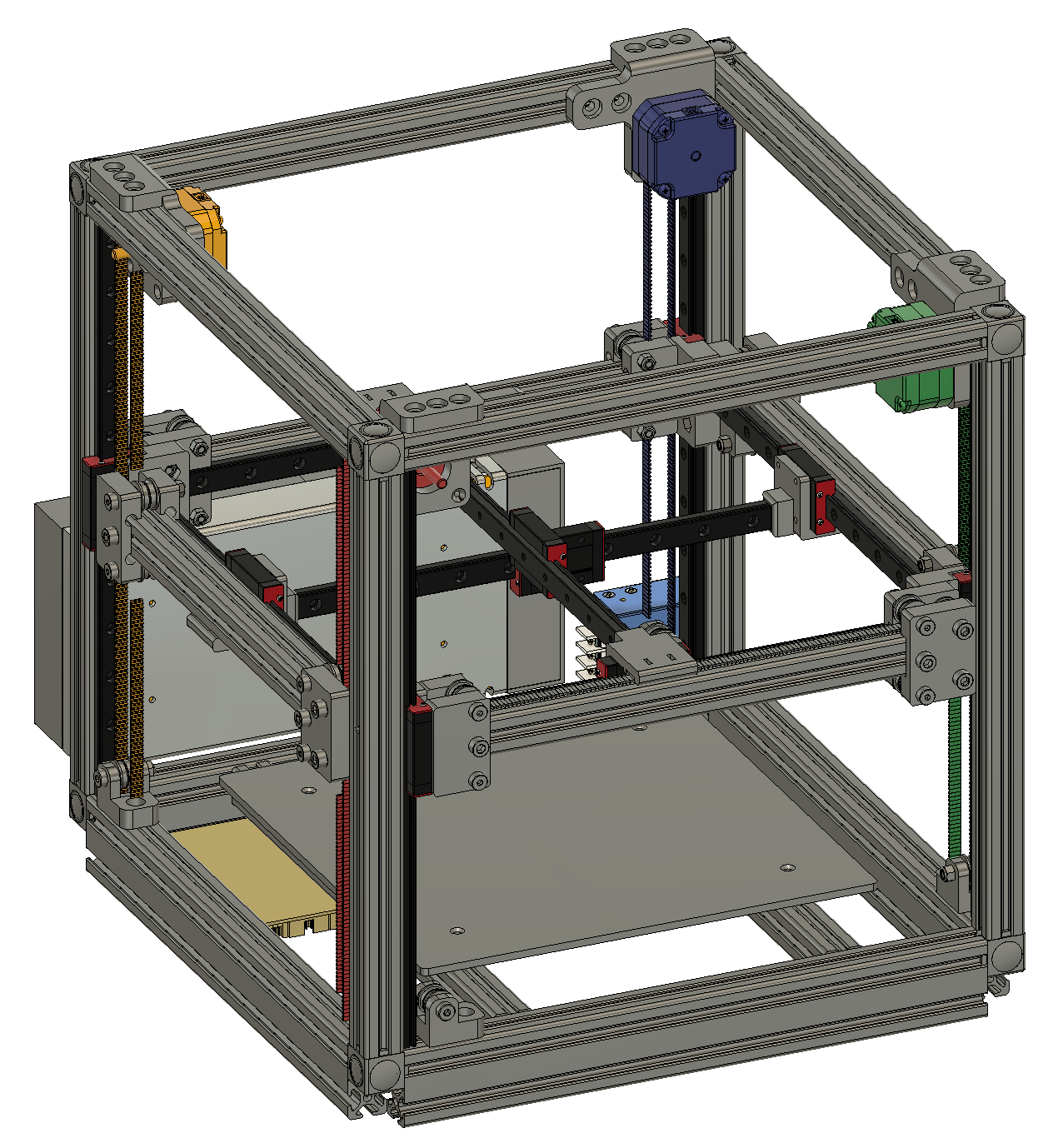@droftarts https://i.imgur.com/o2IsTWH.png is the original joint I settled on in my 2016 build. Double-shear, dual-back-to-back preloaded radial bearings (608), with steel washers used for compressing plastic between metal, and separating inner from outer bearing races.
Tapered rollers or angular contact sets have been suggested before, and I think they're a fine idea, but I think larger bearings (like the 6806s in Seward's latest videos) and using square tube (printed or otherwise) is a much bigger improvement over my old 2020 arm idea. Extrusion does not resist torsion force very well due to the small core diameter, and there's a large number of elbow angles where the force on one or more of the arm segments is largely torsional.
My most recent Tripteron prototype (https://www.youtube.com/watch?v=7LAmA4Q6-o4) build is using 2040 segments with single-shear joints, radial bearings on each end 40mm apart, and a thrust bearing inbetween. It's decently stiff, but I still think single-shear needs much larger bearings to improve the surface area over which the joint halves interact (stiffening the lever arm of the interface).
Seward's current joints in the video mockups are pairs of 6806s in single-shear with bolted in caps to secure them together, and it's a very reasonable approach. I also believe you could use a 6806 and 608 in combination with a similar setup and it'd be fine. The biggest question overall here is honestly joint 'wrist' geometry/cross-section, and the material/cross-section of the arm segments given their torsional and bending forces. Everyone focuses in on the joint itself but these other two points are much bigger in my experience. And I built dozens of these things to test 
Anyhow, that's my $0.02

